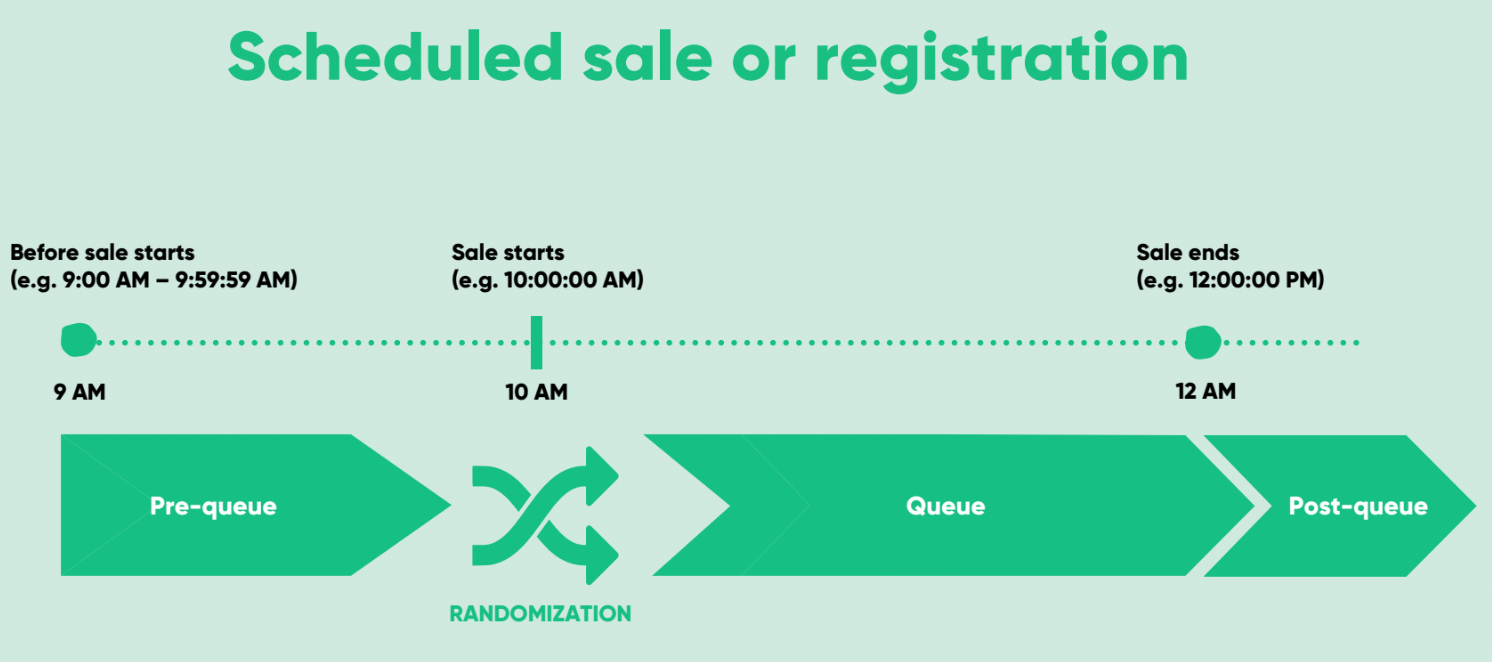Customer loyalty in ecommerce: The surprising benefits of fairness

One of the biggest drivers of ecommerce customer loyalty is often overlooked. Several studies have found fairness to be perhaps the most significant predictor of trust and loyalty online. In this article, we dive deep into the research on fairness and customer loyalty. Discover why fairness is so important and how you can use it to create loyalty for your brand.
Customer trust, satisfaction, and loyalty are among the most sought-after outcomes for ecommerce stores everywhere.
Loyal customers are your most valuable asset. They’re not only great shoppers who’ll stick with you in the face of competition—they’re also your biggest advocates
Ecommerce enterprises know this. They work hard to build satisfaction and loyalty by pouring massive sums into customer experience optimization, ecommerce loyalty programs, high-quality web design, and high-tech algorithms.
But many businesses fail to recognize the simple transactional trait that’s affected loyalty and satisfaction for millennia.
This humble feature of ecommerce has been shown to have significant impacts on customer loyalty, satisfaction, and trust in several studies.
It is, of course, fairness.
In this article we dive into the research on loyalty and fairness in ecommerce. We cover the different types of fairness, their impact on customer satisfaction and loyalty, and how you can create and highlight fairness in your ecommerce store.
Table of contents
Customer loyalty is important because approximately 65% of a company's revenue comes from the repeat business of existing customers. Loyal customers buy products from you again and again, they recommend your brand to friends, engage with your marketing material, and provide valuable insight into understanding and refining your target audience.
More than 90% of brands now offer some form of loyalty program. Why? Because improving ecommerce customer retention is among the top priorities for businesses across industries. The stats on the importance of loyalty speak for themselves:
- It’s 5-25x more expensive to acquire a new customer than to keep an existing one
- 77% of consumers say they've remained loyal to a specific brand for 10 years or more
- 57% of consumers spend more with brands they’re loyal to
- Brands that offer positive experiences receive three times more word-of-mouth marketing than brands that offer dull experiences
- A 5% increase in customer retention correlates with a 25% increase in profit
RELATED: 79 Staggering Statistics That Show the Power of Loyalty Programs
Researchers have investigated fairness in ecommerce in several studies to understand its importance for online retailers.
The results are replicated again and again: fairness leads to customer loyalty.
But the path from fairness to loyalty involves several stages.
It begins with fairness. Fairness creates trust. Trust creates satisfaction. Satisfaction creates loyalty. And loyalty leads to ecommerce customer retention and steady sales.
Researchers Nguyen and Tuan call this the “domino effect from fairness to online customer loyalty.”
The domino effect from fairness to loyalty

This domino effect explains why the most trusted brands are often the most successful ones.
It explains why in a Deloitte survey, 83% of consumers reported trustworthiness being the emotional factor that’s most aligned with their favorite brands.
These results are mirrored in an Accenture survey, which found trustworthiness to be the most influential factor driving loyalty.
Trust is crucial to ecommerce success because it leads to satisfaction and loyalty. And fairness is crucial to trust.
Nguyen and Tuan found fairness explained 80% of the variance of trust among online retailers. This makes fairness one of the most important predictors of trust in ecommerce.
What’s more, the fairness model in this study accounted for 71% of the variance of customer satisfaction, and 56% for customer loyalty. These results make fairness a crucial consideration for ecommerce businesses trying to create loyal and satisfied customers.
Delivering online fairness creates the foundation on which trust can be built. As Nguyen and Tuan write:
“E-vendors should pay more attention to enhancing fairness to create solid anchors [of fairness], because from solid anchors, trust and customer satisfaction will be established, with the domino effects spilling over to customer loyalty. Building customer loyalty is not difficult if practitioners recognize the flow of such domino effects and take advantage of the key role of fairness to consolidate the strategy of the companies.”
This sentiment is reflected in Bond's industry-leading annual Loyalty Report, which states that the most important factors for creating a brand that's trustworthy and inspires loyalty are:
“How an organization cares for the planet, ensures the fair treatment of people, and fosters integrity and fairness within the organization.”
RELATED: Ecommerce Loyalty Programs: How To Keep Customers Coming Back for More
So fairness is essential to ecommerce customer loyalty. But what does this actually mean for you? How can you use online fairness to creating trusting and loyal customers?
Fairness is a contentious concept. It can be tough to pin down. Anyone with kids knows this. Where one person sees fairness, another sees injustice.
Thankfully, researchers and philosophers have spent many years establishing what defines fairness. And what they’ve found goes a long way to explaining how fairness can be implemented and highlighted in ecommerce.
Fairness comes in three key forms: distributive, procedural, and interactional. Let’s look at what each of these means using the example of a sneaker drop where demand exceeds supply.
RELATED: 13 Innovative & Successful Loyalty Program Examples
1. Distributive fairness
Distributive fairness is fairness of outcomes. It means customers feel their final shopping outcomes are fair compared with their inputs. These inputs could be the amount of money they spend on the sneakers, or the amount of effort they put into purchasing them.
In our sneaker drop example, distributive fairness could be created using a first-in, first-out (FIFO) queue. This is fair in a distributive sense because the customer who invested the most time into queueing gets access first. The person who invested the second most time gets access second, and so forth. The inputs and outputs are balanced and fair—the longer you line up, the more likely are to get your hands on the sneakers.

A first-in, first-out queue is an example of distributive fairness
2. Procedural fairness
Procedural fairness is fairness in decision-making processes, logic, and procedures. A raffle for sneakers, for example, is procedurally fair because it relies on the fairness of randomization. A randomized raffle, however, isn’t fair in a distributive sense because the inputs and the outputs aren’t equal. Two people put the same effort into entering the raffle, but only one gets the sneakers.
Researchers have found that when procedural fairness is made clear, customers are typically satisfied with outcomes even when they aren’t what they hoped for. This is because they understand and have confidence in the fairness of the procedure, even if it means they didn’t end up with a pair of sneakers.

A lottery or raffle is an example of procedural fairness
3. Interactional fairness
The third type, interactional fairness, is fairness in interpersonal situations. This is less related to the set-up of the sneaker sale, and more to the treatment of customers.
An interactionally fair sale is one in which everyone who interacts with customer service agents at the sneaker store or online gets the same treatment. This is fairness as related to equality. For interactional fairness, all customers must be treated fairly and equally regardless of their economic status, race, or gender.
The most famous representation of interactional unfairness in retail can be seen in the movie Pretty Woman. As Julia Roberts tells the salesperson, interactional unfairness is a “Big mistake. Huge!”

Treating customers based on their appearance is interactionally unfair
Of the three types of fairness, researchers found interactional fairness to be the largest predictor of trust in ecommerce. This is likely because interactional fairness is the most explicit form of fairness in most online contexts—it’s obvious when customer service representatives are rude and disrespectful.
In terms of the effect on trust, interactional fairness is followed by procedural, then distributive fairness.
These results show building trust among customers is about much more than just outcomes. Customers are more likely to trust a brand that treats them well and has ethical and explicit procedures than one that always provides them with the products they want.
RELATED: Keeping the Internet Fair: Queue-it's Commitment to Online Fairness
Virtual waiting rooms are a SaaS solution that bring fairness to high-demand online sales and registrations. They empower online businesses not only to deliver a fairer shopping experience to their customers, but also to take advantage of the powerful influence of fairness to build trust, satisfaction, and loyalty.
When businesses use a virtual waiting room, they take back control of online traffic. Sales and registrations that were once a free-for-all being exploited by shopping bots and tech-savvy users become orderly, calm, and fair. Here’s how.
Protect against bad bots
Imagine you’re running a Black Friday sale at a brick-and-mortar store and customers have been queuing all night to score some good deals. Just as you open the door, a group of obnoxious teens rush in ahead of the people in line. You let this group buy up all the in-demand products and leave the store without saying or doing anything to them.
A couple minutes later, these teens set up a stall beside your store and start selling your sold-out products at a 200% markup to your customers, who’ve watched this whole procession take place and seen you do nothing about it.
How do you think your customers would react? Would you expect them to be satisfied and loyal to your brand?
You’re probably thinking, “That’s ridiculous, I’d never let that happen.” Yet across the world, ecommerce retailers let this happen every day. Shopping bots can enter your ecommerce store and purchase items before your real customers can even load their page. These bots are often used by resellers looking to use this advantage to make a quick buck.
This is unequivocally unfair. And customers know it.
By allowing bots to buy up your products, you miss connections with real customers and threaten their loyalty to your brand. A similar domino effect to the one described above occurs, where unfairness damages brand trust, which hurts satisfaction, which discourages loyalty.
You can see this domino effect in action in the Tweet below. The unfair experience breaks the customers trust, and they claim they’ll never shop with the retailer again.
Protecting against bots is an important step towards creating fairness in high-demand situations. It ensures real customers get access to your sales and product drops. This provides the fairness foundation through which loyal and satisfied customers can be made.
RELATED: Everything you Need to Know About Preventing Online Shopping Bots
Choose the fairness that suits your brand
Most ecommerce stores struggle to deliver fairness because they have no control over how customers behave on their site. Unlike brick-and-mortar stores that can use queues, staff, and security guards, customers can come and go from online retail sites as they please. And some of these people have unfair advantages over others.
We’ve mentioned shopping bots already, but there are other ways customers get advantages over one another. People with fast internet and close proximity to servers can access pages faster than others. And those with low tech skills or disabilities typically take longer to transact and navigate the purchasing process, especially when they’re up against bots and resellers.
With a virtual waiting room, you can even the playing field and create either distributive or procedural fairness for your sales and product launches. It’s up to you.
The waiting room can be implemented in a first-in, first-out fashion, just as queues exist in the real world. Here you can provide distributive fairness by making customers’ inputs (their time in queue) match their outputs (their likelihood of getting access to the sale or registration).
But the waiting room can also be implemented in a way that draws on procedural fairness, which was found to have a higher impact on trust.
This is done by placing visitors who arrive early in a waiting room with a timer that counts down to the launch of the sale. When it starts, each customer is given a completely random place in line, and they can proceed to the sale based on their randomly assigned queue number.

This empowers businesses to strip advantages away from bots and those with fast internet. It delivers fairness without making customers spend hours or days waiting in line.
The important aspect of this system isn’t only that it’s fair, but that customers can see it’s fair.
Why do lottery numbers get drawn live on television? Why do community raffles pull out the winning numbers in front of everyone?
They do this because fairness is believed when it is seen. For fairness to translate to trust and then to loyalty, customers need to see the fairness first-hand. That’s why interactional fairness had the most robust effect on trust in ecommerce—because it was the most explicit form of fairness studied.
A virtual waiting room makes procedural fairness explicit for customers. With a fully customizable waiting room page and the ability to communicate with customers in real time, you can explain the wait and the steps you’re taking to make the sale or registration fairer.
"Initially, Queue-it was implemented to protect our website infrastructure from spikes in traffic caused by online events. Increasingly it is used to ensure fairness for all our customers when we put relatively scarce tickets on sale, and its robust dependability demonstrates to our customers this fairness."
Discover the virtual waiting room that’s right for you

Use queue psychology to make waiting feel fair
We’ve established fairness is about perception. To achieve the domino effect from online fairness to loyalty, customers need to understand and believe the situation they’re in is fair.
Psychologists have discovered how people feel when they wait matters far more than how long they wait. Waiting is easier when people understand why they’re waiting, when they can see their progress, occupy themselves with other activities, and when they know the wait is fair and their spot in line is secured.
RELATED: The Psychology of Queuing Revealed in 6 Simple Rules
Virtual waiting rooms tap into these tenets of queue psychology to put customers at ease. By focusing on the user experience and facilitating communication and transparency, a virtual waiting room ensures waiting is as fair, simple, and painless as possible.
Delivering the benefits loyal customers deserve
Some brands manage to build customer loyalty organically through great products and customer service. But most brands need to encourage and nurture loyalty among customers. That's why 9 out of 10 brands offer ecommerce loyalty programs.
But with your loyalty programs, it's essential you can deliver on your promises to customers and offer them the benefits they both expect and deserve.
One of the toughest loyalty program benefits to get right is early or exclusive access sales. Often companies will simply email out a link to a private sale page that quickly gets shared around and exploited by bots and resellers.
Loyal customers who follow the link just an hour after it’s sent find products sold out and question just how exclusive their “exclusive access” really is.
You can avoid this problem using the invite-only waiting room. With an invite-only waiting room, you can control access to exclusive sales so you can engage loyal customers, block bots, and incentivize loyalty program sign-ups.
The invite-only waiting room ensures early and exclusive access sales are truly exclusive to only the customers you choose, giving you the control to reward your loyal customers with confidence.
“Running the sale with Queue-it in place made sure we achieved our goal of delivering an enhanced experience for our loyal members. We gave them the priority access we had promised them as a cornerstone membership benefit. ... We’ll definitely be continuing to reward our members that way and keep fairness at the core. It’s great to have Queue-it there as part of that journey."
Tristan Watson, Engineering Manager, Rapha
RELATED: Roll Out the Red Carpet for Loyal Customers with Exclusive Invite-only Sales & Drop
Optimize for simple, user-friendly design
The final important aspect of fairness we focus on is delivering a service that’s simple, seamless, and easy to use.
Websites that score high for usability not only accommodate people from diverse backgrounds, they also improve the perceived credibility and usefulness of organizations.
RELATED: How to Improve your Ecommerce UX with a Virtual Waiting Room
Customers who go through a waiting room don’t need to do anything. When they enter your sale, they’re automatically redirected to the waiting room where they’re given simple, clear wait information. When it’s their turn, they’re redirected back to the sale where they can browse and checkout at their own pace.
We’ve worked hard to make sure customers can’t make frustrating mistakes. If they accidentally close their browser or device, they’ll keep their spot in line. And if they need to run errands and switch devices, they can use the email notification feature to transfer their spot in line to a new device.
This means that whether visitors are tech-savvy bot-users, seniors at the local library, or busy parents shopping on their phones, they’ll all get an equal shot at access.
When was the last time your company considered its approach to online fairness?
A fairer online shopping experience not only makes your store more ethical, it’s been proven to boost customer satisfaction and loyalty.
Loyal customers are at the heart of your business. They’re the biggest drivers of sales, your best marketing tool, and your biggest advocates.
They deserve a fairer online shopping experience.

